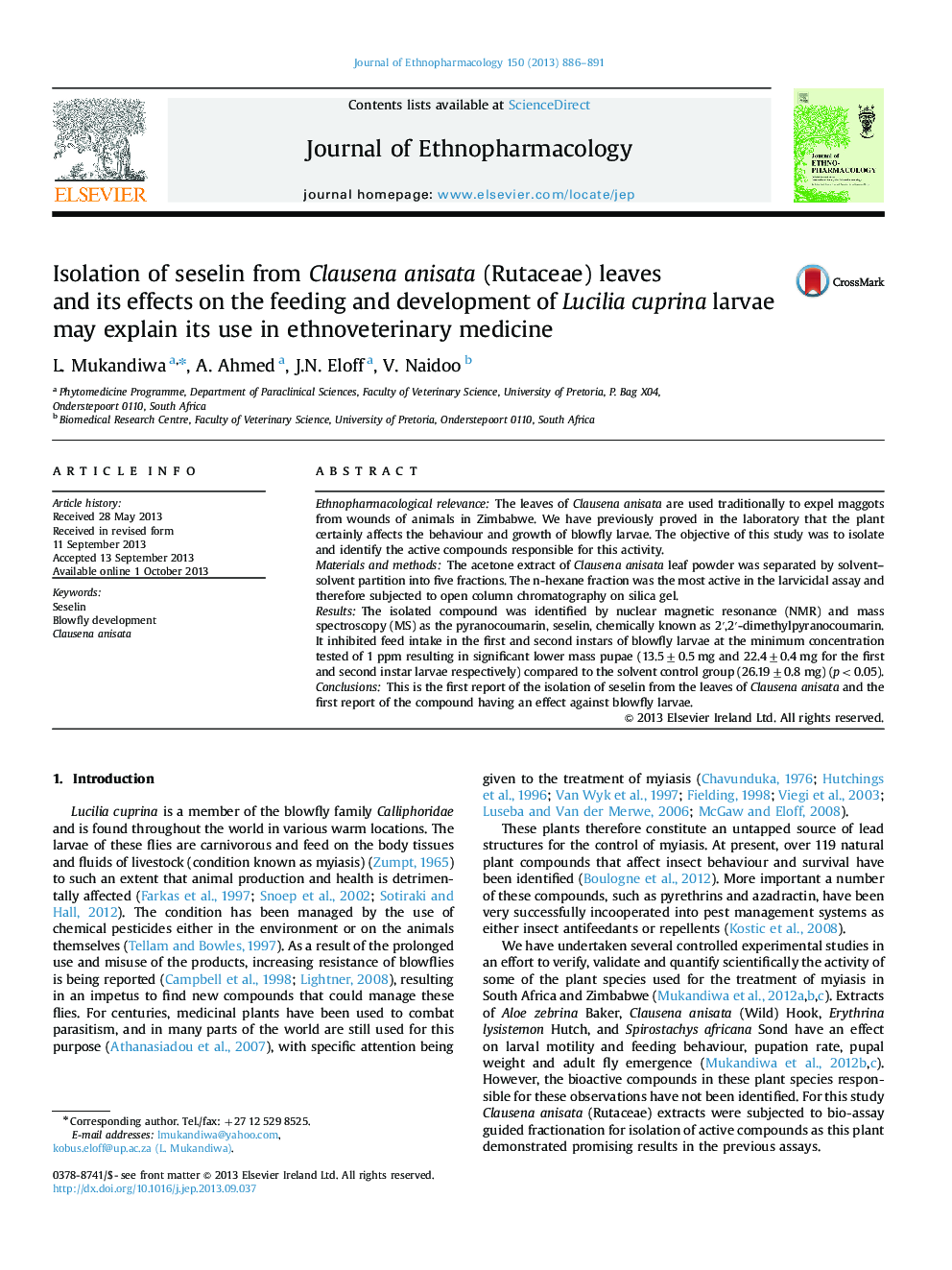| کد مقاله | کد نشریه | سال انتشار | مقاله انگلیسی | نسخه تمام متن |
|---|---|---|---|---|
| 2545327 | 1560406 | 2013 | 6 صفحه PDF | دانلود رایگان |

Ethnopharmacological relevanceThe leaves of Clausena anisata are used traditionally to expel maggots from wounds of animals in Zimbabwe. We have previously proved in the laboratory that the plant certainly affects the behaviour and growth of blowfly larvae. The objective of this study was to isolate and identify the active compounds responsible for this activity.Materials and methodsThe acetone extract of Clausena anisata leaf powder was separated by solvent–solvent partition into five fractions. The n-hexane fraction was the most active in the larvicidal assay and therefore subjected to open column chromatography on silica gel.ResultsThe isolated compound was identified by nuclear magnetic resonance (NMR) and mass spectroscopy (MS) as the pyranocoumarin, seselin, chemically known as 2′,2′-dimethylpyranocoumarin. It inhibited feed intake in the first and second instars of blowfly larvae at the minimum concentration tested of 1 ppm resulting in significant lower mass pupae (13.5±0.5 mg and 22.4±0.4 mg for the first and second instar larvae respectively) compared to the solvent control group (26.19±0.8 mg) (p<0.05).ConclusionsThis is the first report of the isolation of seselin from the leaves of Clausena anisata and the first report of the compound having an effect against blowfly larvae.
Figure optionsDownload high-quality image (172 K)Download as PowerPoint slide
Journal: Journal of Ethnopharmacology - Volume 150, Issue 3, 12 December 2013, Pages 886–891